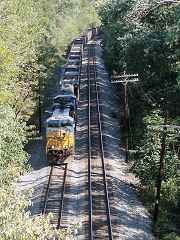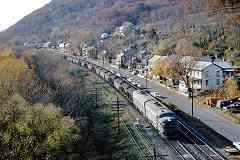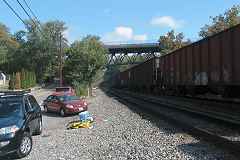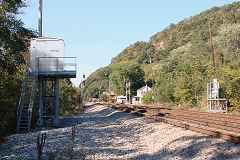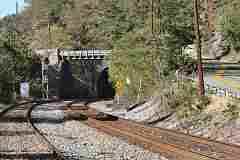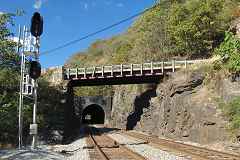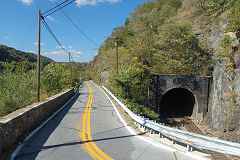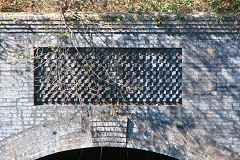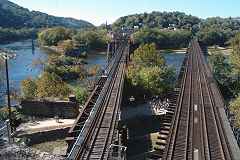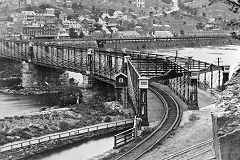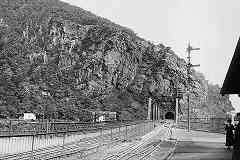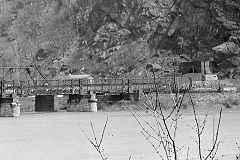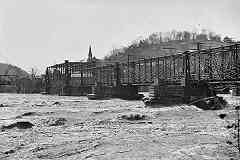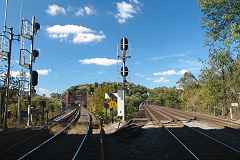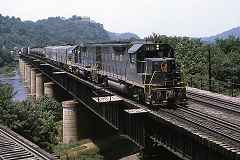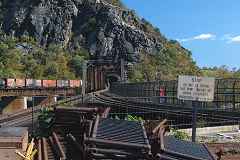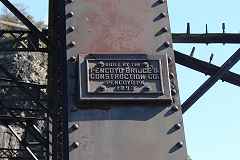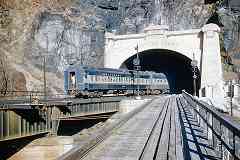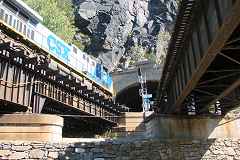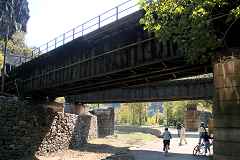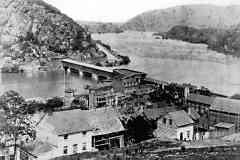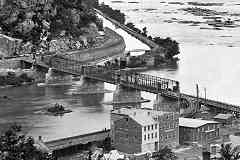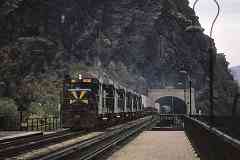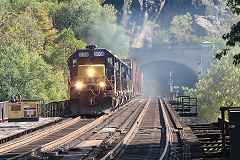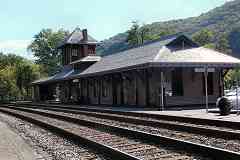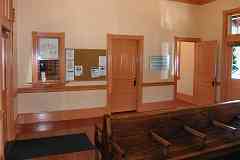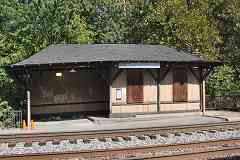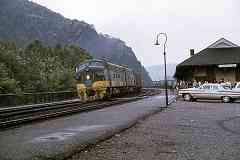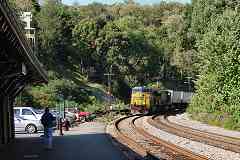|
The tunnel emerges adjacent the canal and Potomac River where empty piers
plus two bridges are found.
In 1836, the B&O constructed the now-disused piers on the left parallel
to and just downstream of Wager Bridge, an 1824 road bridge that
replaced a ferry (yes, Harper's Ferry). The intial design quickly proved
too weak for locomotives that were growing heavier, so in 1839 the piers
were upgraded to not only carry the railroad but also wagons/passengers,
obviating Wager's Bridge that was then removed.
B&O aligned its initial bridge, portions of which were covered, to
provide easy connection with the Winchester & Potomac Railroad (W&P) that
had arrived in town in 1836. W&P did not wish to share Harpers Ferry, nor
did Virginia want to share its agricultural shipments with the port of
Baltimore, and thus B&O's overtures of a business relationship were
shunned. Consequently, instead of a straight connection from the
bridge to W&P's route parallel to the Shenandoah River (seen in the
distant left), B&O had to veer its track sharply north (right)
to follow the Potomac upstream.
Link:
Covered Bridges
|
